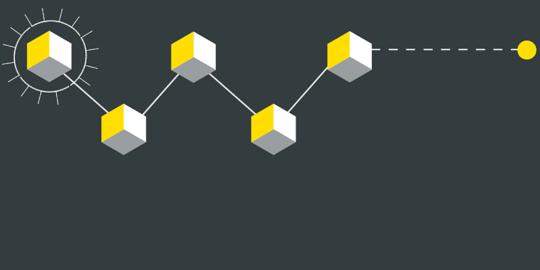On Wednesday April 23 international law firm Bird & Bird hosted over 200 representatives from a wide range of private and public sector entities involved in the development and deployment of the Internet of Things (IoT).
Graeme Maguire, co-head of Bird & Bird international communications sector group, welcomed guests to the British Library Conference Centre, setting out the three key themes of the seminar:
- The building blocks for the IoT
- Deployment opportunities for the IoT
- Legal aspects of the IoT
Much like previous Bird & Bird events including “The future is wireless” and “Smart Cities” Graeme emphasised how the event wished to shine a light on the opportunities that exist today.
Of Counsel, Colin Long, introduced the conference, speaking of how the IoT demonstrates a real convergence between sectors such as information technology, media, communications, energy and utilities, as well the increasing impact it is having in areas such as health, sport and transport amongst others.
One of the risks associated with the rapid development of the IoT is over-regulation. There are numerous legal and ethical issues which need to be addressed alongside the technical developments which are taking place. One factor to consider is whether current laws are sufficiently flexible to encompass new issues and challenges arising as a result of these developments, in order to limit over-regulation.
The IoT is proving to be a giant leap for mankind. Politicians today are recognising and accepting the potential benefits the IoT can bring to society, with the UK Government recently dedicating £70 million to research linked to the IoT.
Summaries of the speakers’ fascinating presentations on issues relating to the IoT are set out below, providing an insight of how some of the most innovative companies in the world view the potential impact of the IoT.
Moving towards the Internet of Everything
Ian Foddering, Chief Technology Officer of Cisco UK&I began by reminding the audience of the evolution of the Internet: from simple connectivity to a networked economy, an immersive experience, and finally to where we are today; on the cusp of the “Internet of Everything”.
The IoT is a huge step forward as it brings together four components: people, process, data and things. Ian expanded particularly on the healthcare and transport sectors, which he said can greatly benefit from the IoT, as detailed in Cisco’s UK and Ireland Report “The Internet of Everything: Bringing the Future to Life”, dated April 2014.
By 2020, there will be over 50 billion devices connected to a network, including “things” which will produce data, and that data will be aggregated using “Fog” computing, enabling intelligent, informed decisions to be made at the source where data is being collected.
Ian concluded by saying that three key factors are critical to the success of the IoT:
- The ambition of organisations: this is a huge opportunity for society, but is dependent in part on our ability to adapt to and embrace it;
- Talent, demonstrated by our ability to understand the evolution and developments in this sector and reflect this in the regulations that are drafted to address the issues relating to the IoT; and
- Partnerships which will be entered into not only between organisations but also between the Government and the private sector allowing for further exploration and adoption of ventures made possible through the evolution of the IoT.
The Technology Ecosystem 1: Hardware – chips, meters, devices
Joshua Cooper, CEO of Hildebrand Technology Limited, started with a controversial statement that the IoT is “not quite the Internet and not quite Things”, as the purpose of IoT technology is not about the “thing” itself, but rather about its environment.
We need to consider the amount of computation, memory, communication and – most critically – energy needed for all the “things” which are increasingly being connected to a network.
Joshua went on to say that “low cost will drive adoption”, adding that the cost of the electronics of a device should be around $5 and that it is often the operational cost of bringing a product to the market which makes a product expensive.
New technologies will appear in the form of “wearable” technology.
Hardware will be linked to services; platforms are key to rapid expansion (but closed systems will hold back); and issue surrounding batteries and sensors are likely to be overlooked.
The Technology Ecosystem 2: Communications infrastructure
After a brief introduction on EE’s top of the range network service offering and a general description of spectrum and spectrum allocation today, Matthew Redding, Director of Joint Ventures and Partnerships at EE, stated that there are 3 “mobile” milestones which have marked the development of the mobile internet industry:
- 1990s onwards: Basic fixed PC and mobile integration;
- 2005 onwards: Personal connectivity – the ability to access a smarter world through smart screens; and
- 2013 onwards: Industrial connectivity, where the internet and connectivity are no longer defined, or confined, by a screen.
Matthew then focused on the automotive sector to expand on the impact of industrial connectivity and the services which arise from this connectivity, describing how data accumulation and monitoring of a driver’s performance via a blackbox or an application represents a new phase in the motor insurance industry. Ability to aggregate data in real time is also something which is going to become increasingly prevalent in society, as there is ambition for live data to be fed directly through to connected advertising screens around the country.
Finally, Matthew set out the following reform challenges which will need to be addressed in the UK:
- The UK has the capability to lead the international community to deliver standardisation across the eco-system;
- The UK should also lead the international community to embed security standards at the heart of the IoT eco-system;
- Spectrum policy needs to support the development of 5G;
- It is necessary to ensure that there is a level regulatory playing field for all participants in the market, and to eliminate any unnecessary regulation;
- The issue of privacy in the context of the IoT should be successfully managed; and
- Business incentivisation schemes relating to the adoption of IoT devices should be introduced, and the Government should lead by example.
The Technology Ecosystem 3: Software, apps and the Cloud
Ewan Dalton, Azure Cloud Specialist at Microsoft, kicked off his presentation by describing four “Mega Trends” which will dominate the near future, but which will fade in the background of the IoT in time as they become widespread and common to the technology. These are: mobility, the social side of the internet, the cloud and big data.
Microsoft Azure run cloud platforms through 16 global data centres. Their goal is not to process the data that is stored in these data centres, but to run the platforms which the data sits on.
As well as the data services provided, Microsoft Azure also provides consumers with app services to build and deploy a wide variety of applications – including web, mobile, media and line-of-business solutions, and with infrastructure services enabling users to create and benefit from virtual machines and management tools, by way of example.
Microsoft software is being used by experts who combine it with hardware to build solutions for customers.
The Technology Ecosystem 4: Connectivity – security and robustness of the radio link: demands on spectrum and the need for resilience
Wassim Chourbaji, Senior Director of Government Affairs at Qualcomm, discussed how spectrum is essential for the IoT as mobile has become so essential.
The big challenge will be making spectrum available to everything in order to make machines, objects, people, places and devices more aware, connected, intelligent and interactive.
Different radio links will have an impact on the nature of demand in different areas, such as uninterrupted vs. intermittent operation, wide area vs. short range coverage, robustness vs. best efforts with regard to quality of service, and high vs. low bandwidth data rates. Despite these differences, the different radio links will have spectrum harmonisation, scalability and affordability in common.
To allow innovation in technology, innovation in spectrum and access is essential. In particular, Wassim developed on an emerging “complementary licensed model” of accessing spectrum (ASA/LSA), as opposed to the current well known licensed vs. unlicensed models. ASA/LSA allows for a shared exclusive use of spectrum to make use of the high volumes of underutilised quality spectrum which is available to grab.
Access using this model will therefore not be available everywhere and at all times, but will be available for specific purposes at specific times. This model was trialled in Finland in September 2013.
Panel Session No.1
The first round of presentations were followed by the first of two panel sessions, during which Colin Long voiced some of the questions received from attendees via email and Twitter during the first half of the event, which were then addressed by the panel. Below is a brief description of this panel session.
The first question asked whether regulation is a hindrance or whether it should be used to kick start the IoT out of start-up territory. Wassim Chourbaji from Qualcomm responded that regulation should not kill innovation and opportunity, but rather should be flexible. There is a need for cooperation from the industry, but regulation should be very light. Ewan Dalton from Microsoft expressed that in his view there is an important difference between facilitating regulation and disciplining regulation, the latter arising from the recognition of issues, rather than pre-empting and aiding development. Joshua Cooper from Hildebrand Technology added that it is difficult for entrepreneurs to understand what the regulatory environment is, and that it is difficult to implement regulations on a global scale to reflect the economies of scale which are relied on in the industry. Matthew Redding from EE further added that in some sectors, such as health, deregulation is important as a starting point in order to allow room for opportunity. Colin Long concluded that the industry needs to shape the environment they work in before regulators restrict the shape that this is able to take.
The second question asked whether the panel agreed that 4G is the best current network to carry IoT traffic. Matthew Redding replied that 4G is the current network to use, but that 5G is even better. Colin Long added that in addition, this can depend on the product in question, as smart metering in the UK is based on the 2G network. In addition, it was discussed whether or not there is a risk that technologies compatible to a certain type of network only will become fossilised and will therefore not be forward-compatible. Joshua Cooper considered that the introduction of 5G will alleviate this risk and enable further evolution.
The final question of this panel session addressed the risk that there will not be enough radio frequency to cope with the increasing demand and dependence from the IoT. Wassim Chourbaji stated that there is room for growth and that there is a need to innovate in spectrum access.
Legal Issues 1: The next patent frontier
Following straight on from the first panel session, Katharine Stephens, co-head of the London Intellectual Property department at Bird & Bird, went on to address potential patent problems with IoT in the context of the smartphone patent wars. In the GSM era there was little patent litigation because there were few manufacturers of mobile phones and they were all owners of patent resulting in a long-history of cross-licensing. The recent spate of litigation has occurred because, firstly, the disruption in the industry caused by Microsoft, Apple and Google and that fact that, there are many more 3G and LTE patents and many of the owners are not manufacturers but rather are so-called trolls.
Standards ensure interoperability allowing a manufacturer to enter a specific market. However, some of the technology incorporated in a standard may be covered by what are called standard essential patents (SEPs). These are patents which are necessarily infringed by the technical implementation of the standard and so could potentially shut third parties out of the standard were it not for a commitment on the part of the patent owner to license the patent. Standard setting organisations require their members to sign up to such commitments to offer licences on FRAND (fair reasonable and non-discriminatory) terms.
Katharine gave a number of examples of case law in the area to illustrate how current this issue is, dealing with the two key issues of (1) should an injunction be granted over a SEP or, in the alternative, does a FRAND defence exist which trumps the injunction; and (2) what is FRAND and how to set a FRAND royalty. In relation to the first of these issues, Katharine considered case law in Germany, the Netherlands and the UK and also looked at various pronouncements from the Commission. In relation to the second issue, there is no case law in Europe and only two very recent cases in the USA in which the judges seem to be taking a sensible line on the issue if royalty stacking.
STOP PRESS: On 29 April 2014, the European Commission adopted its final decisions in two landmark proceedings regarding SEPs (the Samsung and Motorola cases). It accepted binding commitments by Samsung not to seek injunctions in relation to SEPs where certain conditions are met, and found that Motorola had infringed Article 102 TFEU by seeking and enforcing injunctions against Apple in relation to SEPs. An article by Peter Willis and Jörg Witting can be found on this website.
Legal Issues 2: Understanding liabilities and translating risks to help drive business and investment
Roberto Camilli, Senior European Counsel for Bird & Bird in Milan, looked at the complicated legal landscape of the IoT. It is an area which affects, or has the potential to affect, numerous industry sectors, and brings into play a number of areas, such as outsourcing, IT and communications, etc.
As new players come in and complicate the business landscape, the liability of the different players on the market towards one another is one area of law which could see a change as a result of the evolution of IoT. Relationships are increasingly becoming multi-party with very specialised players, making it harder to assign a fault to one player over another. Although standard legal tools can and will be used to resolve future issues between players, it is crucial for lawyers to understand the industry in order to apply the law effectively.
Other areas of law which have to adapt to the new problems presented by the IoT are:
- Data Protection, as raw data is being collected from people who are not contractors to an agreement, bringing questions regarding the ownership of this data;
- Cyber-security, as risks of hacking and infestation become greater, it is important to have the correct legal tools in place;
- New contract rules, to deal with issues such as contracting through independent networks of connected machines and real-time contracting;
- Regulatory developments, to address the above issues as well as connectivity and interoperability; and
- Insurance, to address new opportunities of real-time insurance coverage and insurance cancellation, as well as the evolution of insurance risk and coverage.
The Market for IoT 1: Internet of Energy
Michael Rudd, Energy partner at Bird & Bird, started this joint presentation by looking at the opportunities of the IoT within the energy landscape, the “Internet of Energy”. Various drivers are stimulating opportunities. First, the physical energy landscape is changing with renewable generation, decentralised energy solutions and smart grid investment. Second, consumers are taking greater control in managing their energy needs which has driven growth in supply and demand side management solutions. Focussing on demand side management, Michael observed that this is still an emerging market in many jurisdictions. Energy and carbon public policy (which in the EU includes obligations on public and private sector to reduce consumption and, in the UK, is less reliant on fiscal incentives) and market solutions (supported by finance, insurance, tax and contractual solutions) are being developed and implemented to deal with both recognised growth barriers and emerging market opportunities. The Internet of Energy will be both a leading and supporting market solution.
Alex Rathmell, Managing Director of EEVS, based his part of the presentation on an overview of trends in the ‘demand side’ of the energy industry. In the context of the acute challenges facing the UK energy system, end-use energy efficiency is now the single biggest component of the government’s proposed solution, as well as being a rational response for households and organisations faced with energy price rises and potential future grid instability. The presentation covered the range of energy conservation measures now being deployed, the potential of the capacity market to stimulate investment in energy efficiency measures, and how technology – in particular smart meters and devices – is driving unprecedented interest in the demand side sector as a growth area.
The Market for IoT 2: Healthcare
After Energy, the presentations moved on to consider the impact of the IoT on healthcare, with a presentation from Bruce Hellman, CEO of uMotif. uMotif is a start-up which aims to empower people to track, monitor and understand their health.
The IoT will help healthcare to evolve in such a way as to provide doctors with real time information on patients, helping to fill a gap and enabling relationships between doctors and patients.
The current healthcare landscape means that, in order to introduce the IoT to benefit the current system, it is necessary to work through regulations which are not always extremely clear, making things difficult for companies such as uMotif.
However, the benefits of the IoT are such that the industry is now moving from a technology push to a demand-led pull.
uMotif’s approach is to support patients and clinicians and strengthen their relationships by developing and making accessible services through the IoT, in order to improve healthcare.
The Market for IoT 3: Aviation
The next presentation looked at the impacts of the IoT on the aviation industry, with a particular focus on unmanned aviation, its limitations and opportunities, with a presentation from Paddy Davies, founder of Horizon AP.
Around 90% of unmanned aircrafts today are so-called “rotary platforms”, which work perfectly within the scope of current airspace regulations. Capacity to increase the scope of unmanned aviation beyond what it is today is limited and numerous attempts to do this have failed, including attempts to develop policies in such a way as to further develop the scope for opportunities and evolution.
The CAA is having to find a balance between trumpeting the capabilities of unmanned aviation and dealing with the huge amount of small organisations making requests for authorisation to operate unmanned aircraft for specific purposes.
It is possible that, in the not-too-distant future, unmanned aircraft will be enabled to deliver small packages in rural areas, although it is questionable whether this will ever be extend to allow for deliveries over considerable distances.
Initiatives exist to develop the potential of unmanned aircraft, such as the Flying Donkey Challenge, operated by La Fondation Bundi, which seeks to pioneer a new transportation system for the world by developing robots with rugged air frames capable of safe and cheap unmanned flight of heavy cargo over long distances through technical, legal, logistics and architectural and design challenges.
Legal Issues 3: Data Protection, Privacy and Security – New Challenges from IoT to M2M
Bird & Bird partners Ruth Boardman, from London, and Sven-Erik Heun from Frankfurt spoke about the inevitable data protection, privacy and security issues linked with the evolution of the IoT.
Ruth and Sven-Erik explained the difference between personal data, which is target by data protection legislation, and anonymised data, which is currently not. They expressed the possibility that the increasing amounts of data being held and availability of computing power may make it hard to argue any data is anonymous.
Consent of consumers and their awareness of the implications of their use of these devices is also a big issue to consider. We may see a shift from the current terms and conditions, which are often extremely long (some being longer than Shakespeare plays!), to other solutions, such as putting icons and seals on products, leading to consumer consent.
Security is the most important issue with regard to consumer acceptance of IoT and therefore crucial to the evolution of IoT.
A thought-provoking look at what IoT might have changed in 15 years’ time
Finally, Stan Boland, CEO of Neul, took the floor and moved the discussions even further into the future. Connectivity has evolved from fixed to mobile and now to the IoT. The demographic change which results from a growing population, greater urbanisation and the fact that people are living longer is creating enormous potential at a time of great technology confluence.
This is resulting in revolutions in:
- The home, through developments relating to healthcare, entertainment, utilities and appliances;
- Transport, with IoT being used to improve traffic, parking, logistics and highways;
- The Community, with IoT developments impacting on factories, retail and surveillance; and
- National, through the introduction of smart grid, developments in infrastructure, remote monitoring and the defence sector.
Nevertheless, there are key challenges which need to be addressed. These include how things are connected, the quality of service of these “things”, and the security of data present on a network. Being able to overcome these challenges will unlock a massive opportunity.
Neul is going to deploy licence-exempt spectrum in UK city this quarter, and the first Neul Cellular IoT deployment with a mobile network operator will take place in the second half of 2014.
Stan concluded the presentations for the day by saying that the IoT is set to be bigger than anything seen in high tech before… and it’s happening now!
Authors:
Ronald Hendrikx
Partner, UK
Tel: +44 (0)20 7415 6000
Colin Long
Of Counsel, UK
Tel: +44 (0)20 7415 6000
Graeme Maguire
Partner, UK
Tel: +44 (0)20 7415 6000




